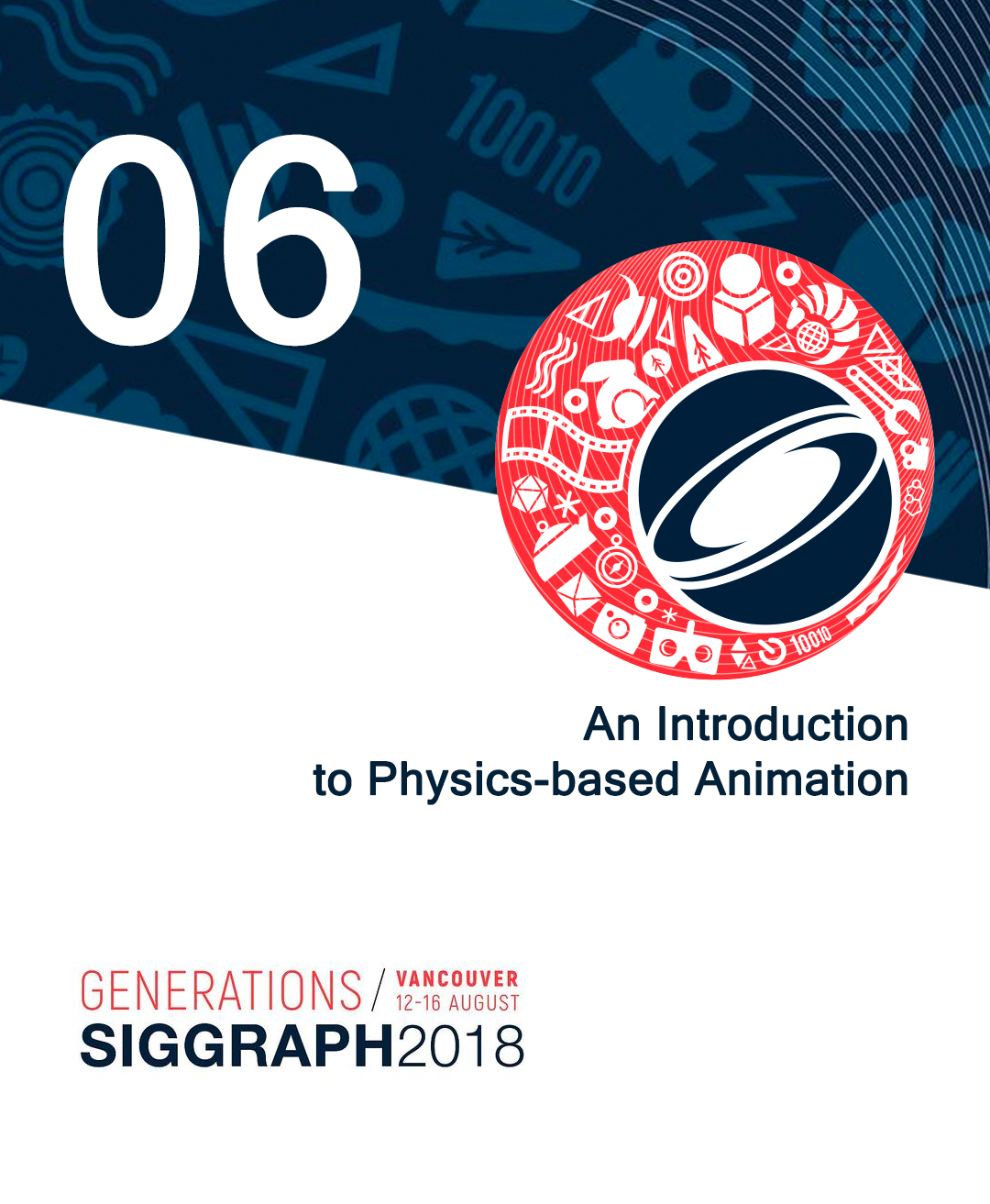“An Introduction to Physics-based Animation” by Shinar
Conference:
Type(s):
Entry Number: 06
Title:
- An Introduction to Physics-based Animation
Course Organizer(s):
Presenter(s)/Author(s):
Abstract:
Prerequisites
Linear Algebra, Calculus, Introductory Physics
Level
Beginner
Intended Audience
Beginning PhD students and industry professionals
Description
Physics-based animation has emerged as a core area of computer graphics finding widespread application in the film and video game industries as well as in areas such as virtual surgery, virtual reality, and training simulations. This course will introduce students and practitioners to fundamental concepts in physics-based animation, placing an emphasis on breadth of coverage and providing a foundation for pursuing more advanced topics and current research in the area. The course will focus on imparting practical knowledge and intuitive understanding rather than providing detailed derivations and the underlying mathematics. The course is suitable for someone with no background in physics-based animation—the only prerequisites will be basic calculus, linear algebra, and introductory physics. Despite the importance of the topic, a course broadly covering physics-based animation hasn’t been offered since 2003.
The topics we will cover will begin with a simple, and complete, example of a mass-spring, introducing the principles behind physics-based animation: mathematical modeling and numerical integration. From there we will systematically present the mathematical models commonly used in physics-based animation beginning with Newton’s Laws of Motion and conservation of mass, momentum, and energy and then describing the underlying mathematics for animating rigid bodies, soft bodies, and fluids. Then we will describe how these continuous models are discretized in space and time, covering Lagrangian and Eulerian formulations, spatial discretizations and interpolation, and explicit and implicit time integration. In the final section, we will discuss commonly used constraint formulations and solution methods.




